Horror games are some of my favorite ways to play at the tabletop. There’s so much fun that can be wrung out of horror, so many ways you as a GM can weave scares or to be scared in turn as a player. It also allows you to broach some of the more…transgressive subjects you might not run into in a more traditional TTRPG. But that’s the beauty of horror as a genre. It plays on the dark parts of ourselves and, naturally, on the darker parts of society. Being afraid also lets us get our barriers down and learn new things about ourselves and our characters. This has driven the decades of success for games like Vampire The Masquerade or Call of Cthulhu. Unfortunately not every attempt at horror works for every person. All art is subjective…but horror is doubly so. As such when I finally got to dig into Critical Role’s Candela Obscura, the debut TTRPG from Darrington Press, I was disappointed. Because the game wants so much to be a horror game and really be as dramatic as what you see on Twitch. But it isn’t that. It’s too busy running away from its shadow, too busy trying to put up bumpers on the gutters and babyproof the outlets. And it takes what could be an interesting approach to TTRPG was ruined by an inability to commit to its own themes. And that can most obviously be seen in the game’s setting.
Into The Fairelands
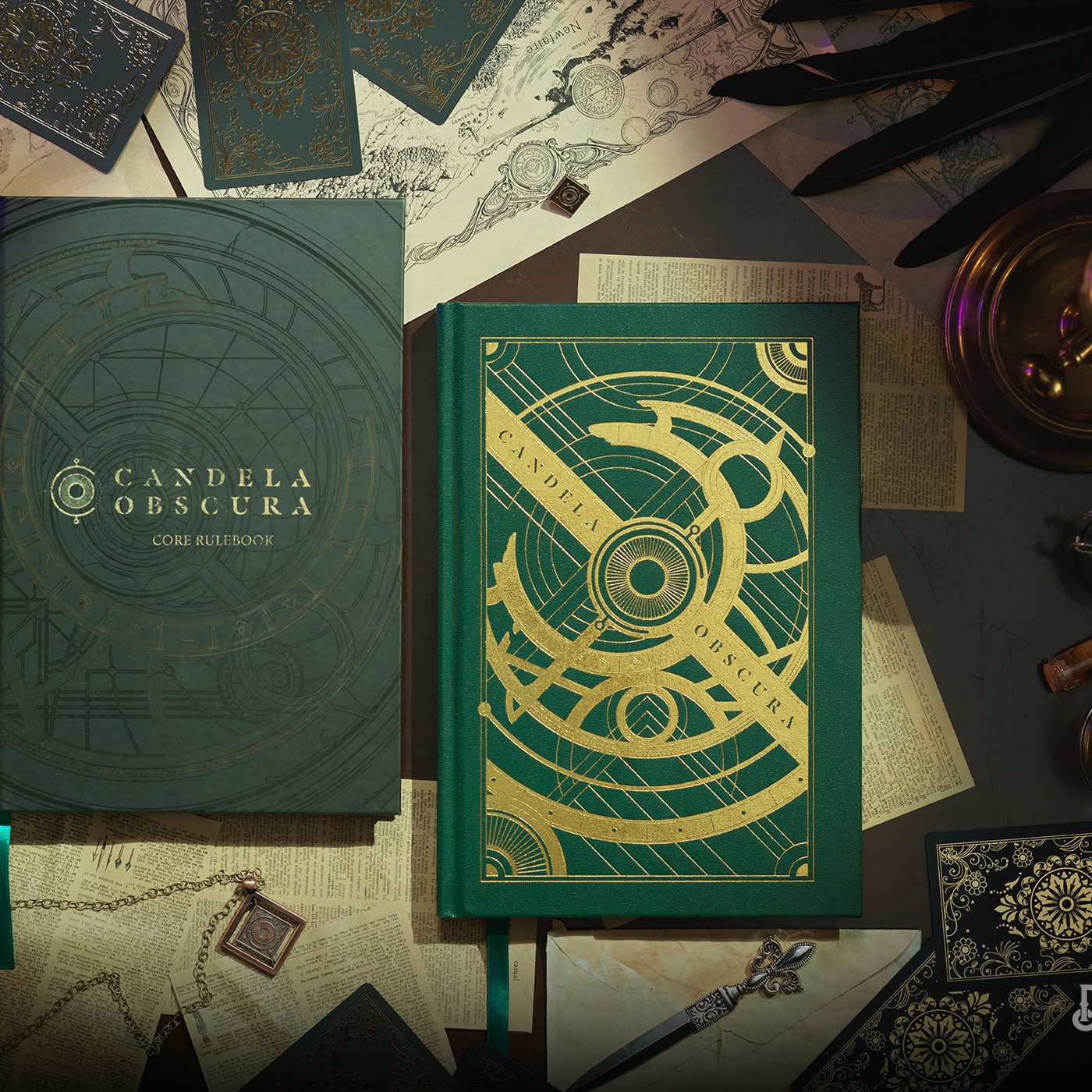
The game as it stands now is set in The Fairelands, a state in the nation of Hale with a vaguely late-Victorian vibes (1907 by the book’s count). Yes, folks, this is a steampunk game. Unfortunately they’re not setting their storytelling in the real world 1907, in real-world city like London. It’s not even an alternate London of some kind, or a fictional city in the real world. Instead they’ve crafted this entire new setting and world to adventure in…but only got about halfway. It wants so much to be set in our world, down to being set in the “early 20th century” and having a timeline that has rough timeline equivalents of The Renaissance, English Civil War, and WWII. The only possible reason I can think of for doing this is, unfortunately, their dedication to inclusion.
See, if they set their game in the real London or even an alternate one then they’d need to include some of those nasty historical features that happen in a big city. Especially the Imperial Core in Edwardian Times. Things like racism, colonialism, sexism, homophobia; these are all nonexistent. There’s not even any sectarian religious conflicts. They easily sidestep all that with a setting that is almost, but not quite, entirely unlike the real world. The book is written almost like an HR manual for itself, making sure you understand that everything bad is done by individuals and neither the book, the authors, or the fictional nation of Hale would endorse anything bad. Much of the “evil” that happens is more based on supernatural corruption than any sort of institution. It even has to put a caveat on the fact that it includes prisons.
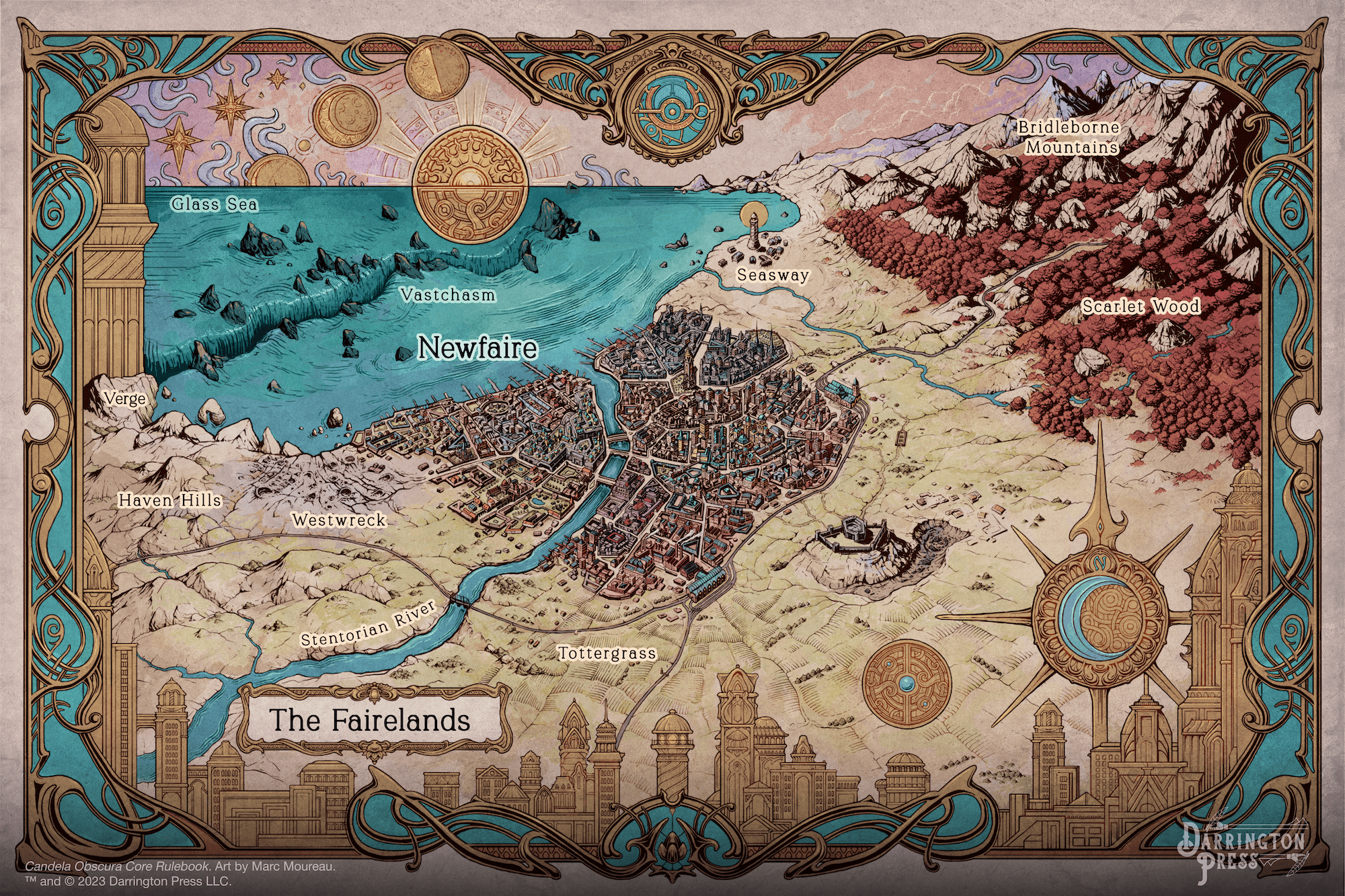
I don’t want to seem too down on the setting, because it is the content that takes up most of the book and still has some bright spots here and there. It’s as rich and dense as you’d expect and the way the book weaves in artifacts (letters, forms, cards) between the images and art is really nice. It’s a good sandbox for a DM and there’s plenty of variety in setting and hooks.
Weaving Your Tale
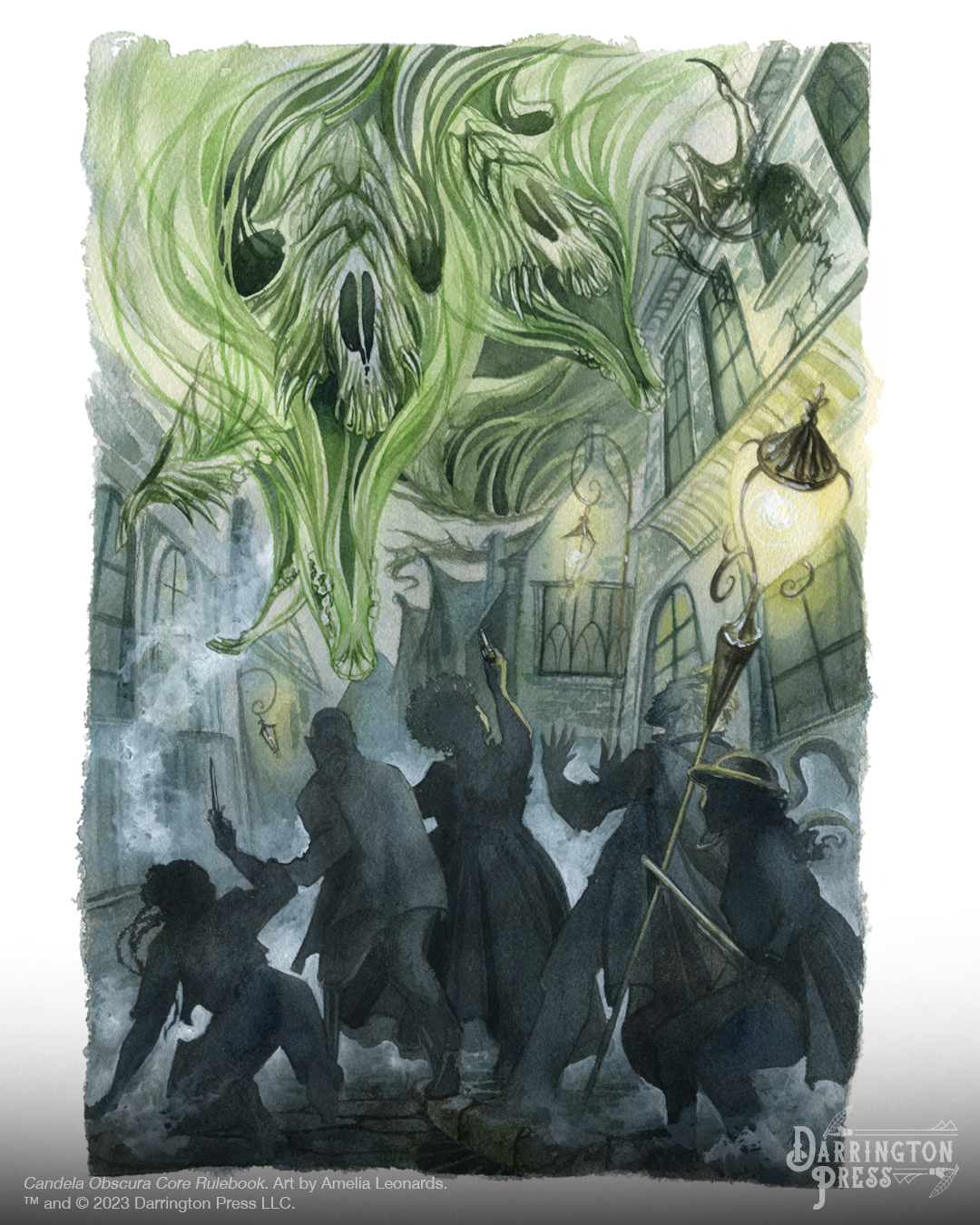
The game basically has an identical setup as multiple other horror games, with you playing as an investigator of the supernatural as part of a cell called a “circle” that undertakes different assignments around The Fairelands. Each player picks a “role” and in that role a speciality. This dictates what your character is good at and helps you shape your roleplay. So yeah, it’s just the Powered by the Apocalypse approach to character creation combined with the Vaesen character setup. Are the roles interesting? Kind of? They’re still clearly trying to ape that Edwardian style but without the proper anchors of a time period they just seem more generic than anything.
Gameplay is d6 based but not very dice-heavy at all, since the game is more focused around storytelling than mechanics. When you come across an action with an uncertain outcome the GM will have you roll a number of d6’s equal to your skill level in that action. a 1-3 is a fail, a 4-5 is a mixed success, and a 6 is a full success. The GM also sets “the stakes” (literally called that) so after you make your roll you know what you might be dealing with. GM’s, by comparison, roll nothing and act mostly as a referee and stage director helping the group shuffle the story along. You also have to focus a “spotlight” on characters now and then (oh, and there’s no real initiative) which just kind of shows how entertainment-first the design of the game is.
When Is Horror Not Horror?
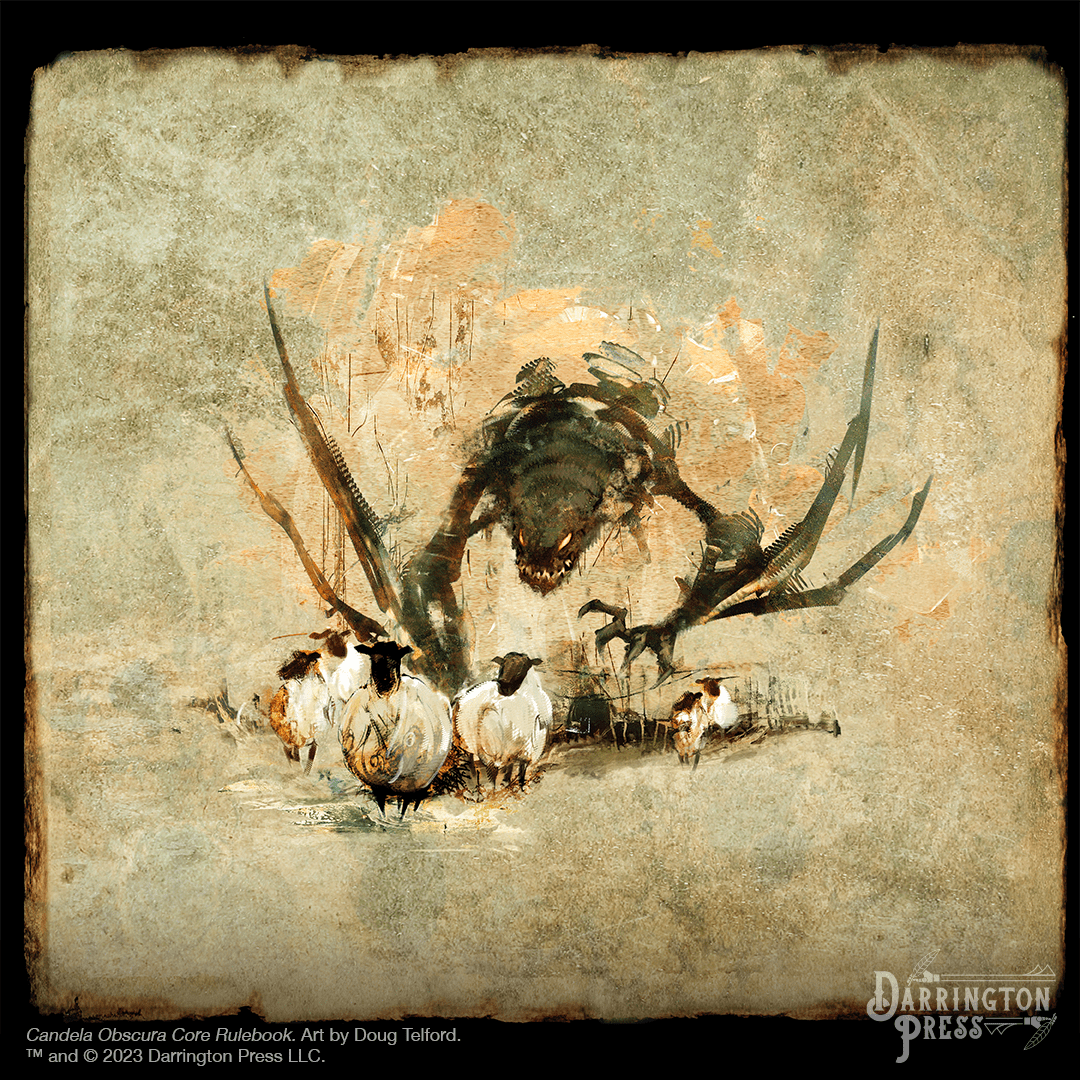
My biggest issue with Candela Obscura is its inability to actually create something that feels actually original, and part of that comes down to its failure as a piece of horror. It draws from (or less charitably rips off) successful games like Vaesen and Blades In the Dark that both do everything that Candela Obscura wants to do but does it…better. Both involve a dark, European setting where a small group of intrepid adventurers navigate the dark and supernatural world. Blades works because it fully creates a dark and complex whalepunk setting for players to enter, and it encourages darker themes and storytelling with the world it creates. Vaesen, meanwhile, is set very much in our world at the time its set. It uses the supernatural as a way to look at the trauma, violence, and death that industrialization brings to the world. The sample adventure in the Vaesen rulebook even revolves around a deeply disturbing familial drama that even without the ghosts and dark fae would be scary. Neither game is worried about the players being uncomfortable. They trust the players to know what they should feel, what they want to do. Candela Obscura, by comparison, treats you like a baby.
Horror works when it’s being transgressive. It’s long been a refuge for the weird, the queer, the outcast. What that means has varied over time but good horror never quite loses that edge. Candela Obscura is so worried about making sure everyone feels “safe” at the table, so worried that people won’t think it’s endorsing any bad actions, that it rips out its own teeth and shows you the gums. It’s not even defanged because I don’t think it even had fangs. So what you’re left with is a goth steampunk LARP too scared of its shadow to challenge you in any way.
The Verdict?
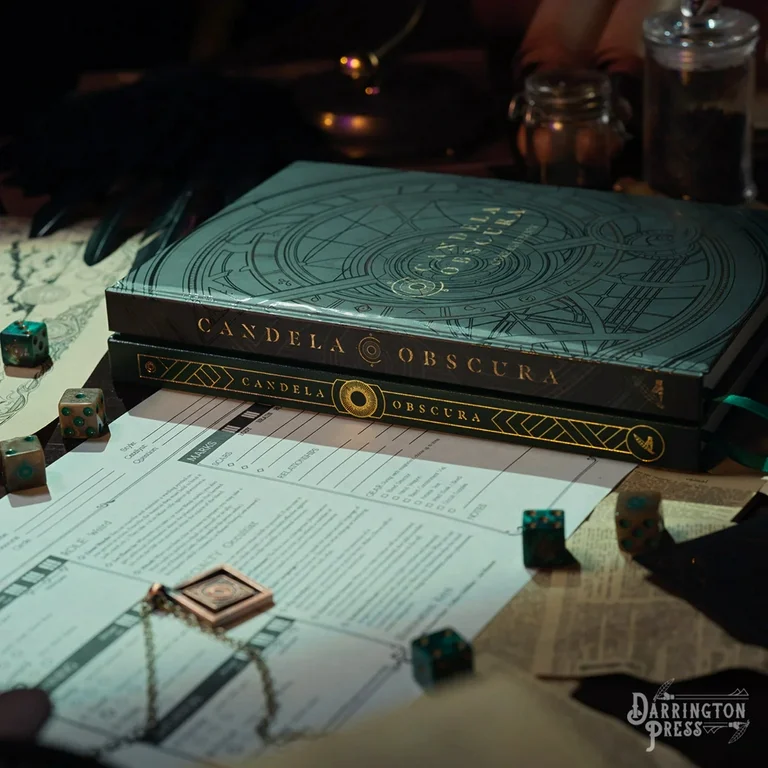
If you’re a fan of the AP or Critical Role, you might still enjoy this game. It’s a beautiful book and very well written, and there’s plenty of little details that I think show there could have been something great here if the authors showed a bit more ambition. But unfortunately this isn’t going to satisfy people looking for a good new horror game. You’d be better off going back to its influences like Vaesen, Blades In The Dark, or even Kids on Bikes.
You can grab Candela Obscura from the Darrington Press shop, or as a PDF on DriveThruRPG.
Images via Darrington Press
Have strong thoughts about this piece you need to share? Or maybe there’s something else on your mind you’re wanting to talk about with fellow Fandomentals? Head on over to our Community server to join in the conversation!

